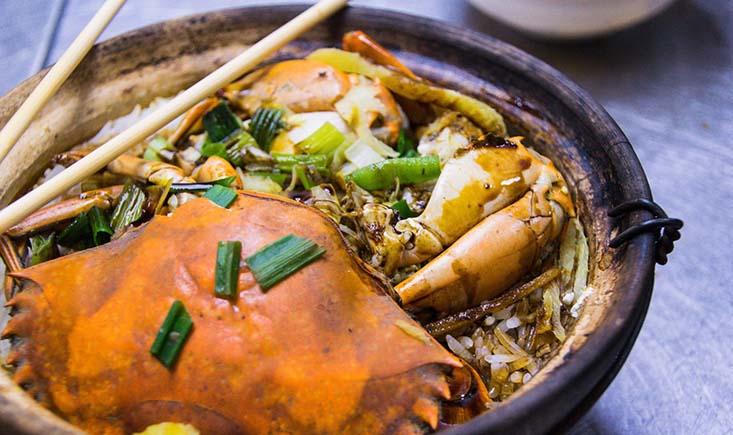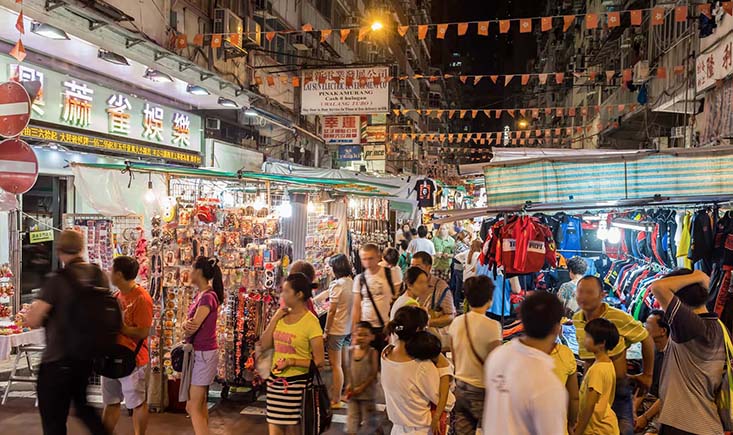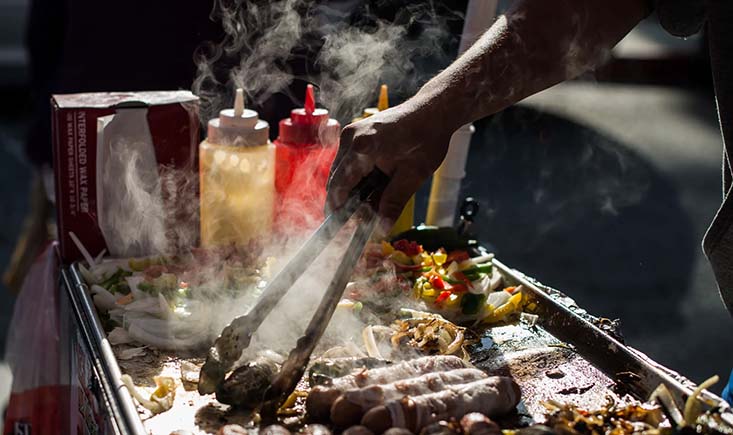
Street Food Odyssey: Savoring Hong Kong’s Street Eats and Local Delights
FoodMy recent sojourn to Hong Kong was an epicurean voyage that has left an indelible mark on my palate. One of the most memorable aspects of my journey was undoubtedly the exploration of Hong Kong’s vibrant street food culture. From sizzling skewers to mouthwatering dumplings, Hong Kong’s street food offerings are a multisensory delight that every food lover must experience. I will regale you with my first-person encounters at four exceptional street food haunts and provide insights into their locations, experiences, as well as pros and cons. Additionally, I will introduce three recommended street food destinations, sharing my personal take on these gastronomic gems.
Exploring Four Unforgettable Street Food Joints
Temple Street Night Market
Location: Temple Street, Yau Ma Tei, Kowloon
Stepping into the Temple Street Night Market is like entering a realm where the senses are awakened under the shroud of nightfall. As the sun dips below the horizon, this lively open-air bazaar bursts to life, revealing its true colors. Rows of bustling street food vendors line the narrow streets, creating a symphony of sizzling, aromatic delights. The air is filled with a tantalizing melange of scents, beckoning curious passersby to indulge in the city’s culinary treasures.

My senses were immediately captivated by the alluring aromas emanating from the food stalls that beckoned me forward. Among the most celebrated street food offerings were the renowned curry fish balls, each bite bursting with a harmonious blend of spices and flavors. The fragrant steam rising from skewers of these delectable morsels teased my nostrils, creating an irresistible allure.
As I ventured deeper into the culinary labyrinth of Temple Street, I couldn’t resist the siren call of the infamous stinky tofu. This pungent delicacy, known for its strong odor, is an acquired taste, and I was determined to embrace its unique flavor profile. The crispy exterior gave way to a creamy and flavorful interior, providing an intriguing contrast that challenged my palate in the most delightful way.
Beyond the culinary adventures, the market pulsated with energy. Street performers showcased their talents, from mesmerizing magic tricks to soulful melodies, adding an extra layer of entertainment to the bustling atmosphere. The vibrant ambiance was contagious, and I found myself immersed in the tapestry of Hong Kong’s street culture.
Pros: The Temple Street Night Market boasts a vibrant ambiance that immerses visitors in the heart of Hong Kong’s street culture. The extensive variety of street food is a paradise for food enthusiasts, offering an array of flavors to satisfy every palate. What makes it even more appealing is the affordability, with pocket-friendly prices ensuring that you can sample a wide range of culinary delights without breaking the bank.
Cons: However, the popularity of the market does have its drawbacks. The bustling conditions can sometimes border on overwhelming, especially during peak hours, as throngs of visitors converge to savor the street food offerings. Limited seating arrangements can also pose a challenge, making it necessary to juggle your food and find a spot amidst the crowd.
Mong Kok Ladies’ Market
Location: Tung Choi Street, Mong Kok, Kowloon
Nestled amidst the bustling shopping haven of Mong Kok, the Mong Kok Ladies’ Market may be primarily renowned for its retail treasures, but it conceals a gastronomic treasure trove that beckons food enthusiasts like me. The juxtaposition of vibrant street food vendors amidst stalls of fashion and souvenirs creates a captivating synergy, making this place a standout on my culinary journey.
My exploration of this unique market began with the tantalizing aroma of spicy fish balls wafting through the air. Unable to resist, I followed my nose to a vendor who expertly skewered these flavorful orbs of delight. Each bite was an explosion of spicy and savory flavors, perfectly encapsulating the essence of Hong Kong’s street food culture. Nearby, the irresistible fragrance of grilled squid enticed me to sample this popular snack, and I was rewarded with tender, smoky morsels that left me craving for more.
Yet, the undisputed star of the show in this culinary theater was the iconic egg waffle. As I strolled along the market, I encountered numerous vendors expertly crafting these crispy, golden-hued delicacies. Each waffle bore the telltale honeycomb pattern, a testament to the mastery of the street food artisans. The juxtaposition of crispy exteriors and soft, eggy interiors created a delightful contrast that was both visually appealing and incredibly satisfying to the palate.
What truly sets the Mong Kok Ladies’ Market apart is the opportunity it affords visitors to seamlessly blend shopping with dining. As I indulged in the scrumptious treats, I found myself perusing stalls laden with souvenirs, fashion items, and curiosities. It was an experience that catered to both the gastronomic and shopaholic desires within me, making it an exceptional destination for a well-rounded outing.
Pros: The Mong Kok Ladies’ Market offers a distinctive fusion of shopping and dining, allowing visitors to enjoy the best of both worlds. The creative pairings of street food delights with retail therapy make it an ideal place to immerse yourself in Hong Kong’s vibrant street culture.
Cons: While the concept of combining shopping and dining is brilliant, it can also lead to peak-hour congestion, especially during busy periods. Additionally, limited seating arrangements may necessitate some improvisation when enjoying your culinary finds.
Sham Shui Po Street Food Stalls
Location: Various streets in Sham Shui Po, Kowloon
Sham Shui Po, a neighborhood in Kowloon, unfurls like a treasure trove of street food delights waiting to be discovered. My journey through its labyrinthine alleyways was akin to embarking on a culinary treasure hunt, where each corner revealed vendors offering an array of tantalizing street food delicacies. From piping hot fish ball noodles to aromatic pineapple buns, the unassuming charm of this district and the authenticity of its dishes combined to create an immensely satisfying escapade for a discerning food enthusiast like myself.
As I ventured into the heart of Sham Shui Po, my senses were immediately enveloped by the rich tapestry of aromas wafting through the air. The fragrant steam rising from bubbling pots of fish ball noodles beckoned me to a humble stall. With my first spoonful, I was transported to a world of culinary delight. The noodles were perfectly cooked, and the fish balls were tender and bursting with flavor, all swimming in a comforting, savory broth. It was a bowl of pure comfort that warmed both my stomach and my heart.
Continuing my exploration, I encountered vendors expertly crafting pineapple buns (bo lo bao). These iconic buns, known for their crispy, sugary crusts and soft, buttery interiors, were a revelation. Each bite was a harmonious blend of sweet and savory, a testament to the artistry of Hong Kong’s street food artisans.
What truly distinguished Sham Shui Po was its unpretentious ambiance. Unlike some of the more touristy areas, this district exuded an authentic charm that felt like a hidden gem in the heart of the city. The bustling streets were filled with locals going about their daily routines, adding to the genuine atmosphere of the place.
Pros: Sham Shui Po offers an unparalleled, authentic local experience that transports you into the heart of Hong Kong’s street food culture. The diversity of culinary offerings is staggering, ensuring that there is something to satisfy every palate. Moreover, the wallet-friendly prices make it an excellent choice for budget-conscious travelers.
Cons: While the authenticity is a major draw, seating can be limited, and it may require some creativity to find a comfortable spot to enjoy your meal. Additionally, for non-Cantonese speakers, there might be a potential language barrier when communicating with some of the vendors.
Central Street Food Vendors
Location: Central, Hong Kong Island
In the midst of Hong Kong’s bustling financial district, where the city’s skyscrapers tower above, I serendipitously stumbled upon a clandestine world of street food vendors during the bustling lunch hour. The contrast of this culinary oasis amidst the corporate landscape was nothing short of enchanting. From the succulent char siu bao (barbecue pork buns) to the delectable dumplings, these unassuming vendors offered a swift and flavorsome respite amidst the fast-paced cityscape. Partaking in these impromptu street-side feasts felt like discovering a well-guarded local secret.

My journey into this hidden culinary realm began with the enticing aroma of char siu bao, their sweet and savory scent mingling with the surrounding urban hustle. These barbecue pork buns were a revelation, with tender, flavorful pork enveloped in a fluffy, slightly sweet bun. Each bite was a mouthful of indulgence, a testament to the authenticity of Hong Kong’s street food culture.
As I continued to explore the offerings, I found myself drawn to the steaming baskets of dumplings. These plump parcels of goodness, filled with a variety of delectable fillings, were a burst of flavors in every bite. Whether steamed or pan-fried, they showcased the skill and artistry of the street food vendors.
Pros: The location of Central Street Food Vendors in the heart of Hong Kong’s financial district is undeniably convenient, making it an accessible culinary gem for those exploring the city center. The flavors of the street food are as authentic as they come, providing a genuine taste of Hong Kong’s culinary heritage. Moreover, the swift service ensures a quick and satisfying gastronomic indulgence.
Cons: While the authenticity and convenience are undeniable, Central Street Food Vendors may have a comparatively limited variety of offerings compared to dedicated street food districts like Mong Kok or Sham Shui Po. Additionally, it lacks the atmospheric charm that characterizes the dedicated street food hubs.
Three Highly Recommended Street Food Haunts
Tsim Chai Kee Noodle Shop
Location: 98 Wellington St, Central, Hong Kong Island
Tsim Chai Kee is celebrated for its heavenly wonton noodles. The al dente noodles and succulent wontons in rich broth were an epiphany for the senses. This modest, no-frills establishment is singularly dedicated to delivering top-tier noodle creations.
Pros: Exquisite noodles, exceptional value for money, prompt service.
Cons: Limited seating capacity, cash transactions only.
Taste Rating: 5/5
Kam Wah Cafe
Location: 47 Bute St, Prince Edward, Kowloon
Kam Wah Cafe is an essential stop for aficionados of Hong Kong-style pineapple buns (bo lo bao) and velvety milk tea (nai cha). The pineapple buns, baked to golden perfection with a delightful sugary crust, complemented by the smooth milk tea, provide a symphony of flavors.
Pros: Iconic pineapple buns, delectable milk tea, amicable service.
Cons: Limited seating, potential brief waiting times during peak hours.
Taste Rating: 4.5/5
Little Bao
Location: G/F, 66 Staunton St, Central, Hong Kong Island
Little Bao offers a contemporary twist on traditional street food, presenting imaginative bao variations, including the delectable pork belly bao. The inventive flavors and trendy ambiance make this establishment an exceptional find for those seeking a fusion of flavors.
Pros: Creative bao assortment, fashionable setting, accommodating service.
Cons: Slightly higher prices in comparison to conventional street fare, limited vegetarian options.
Taste Rating: 4.5/5
Summary Table of Street Food Discoveries
| Street Food Spot | Location | Experience | Pros | Cons | Taste Rating (out of 5) |
|---|---|---|---|---|---|
| Temple Street Night Market | Yau Ma Tei, Kowloon | Bustling night market with diverse street food options, including curry fish balls and stinky tofu. | Vibrant ambiance, extensive food variety | Crowded, limited seating | 4.5 |
| Mong Kok Ladies’ Market | Mong Kok, Kowloon | Street food amidst a shopping market, featuring spicy fish balls and egg waffles. | Convenient combo of shopping and dining | Crowded, limited seating | 4 |
| Sham Shui Po Street Stalls | Sham Shui Po, Kowloon | Authentic street food experience with a variety of options, including fish ball noodles and pineapple buns. | Authentic, diverse, budget-friendly | Limited seating, potential language barrier | 4.5 |
| Central Street Food Vendors | Central, Hong Kong Island | Hidden gem in the financial district, offering quick bites like char siu bao and dumplings. | Convenient city location, authentic | Limited variety, lacks atmospheric charm | 4 |
| Tsim Chai Kee Noodle Shop | Central, Hong Kong Island | Renowned for wonton noodles with al dente noodles and flavorful wontons in broth. | Exceptional noodles, great value | Limited seating, cash-only payments | 5 |
| Kam Wah Cafe | Prince Edward, Kowloon | Celebrated for pineapple buns (bo lo bao) and silky milk tea (nai cha). | Iconic pineapple buns, delightful milk tea | Limited seating, occasional wait during peak hours | 4.5 |
| Little Bao | Central, Hong Kong Island | Contemporary twist on traditional street food with inventive bao variations, including the pork belly bao. | Creative bao options, trendy ambiance | Slightly higher prices, limited vegetarian options | 4.5 |
During my quest to unearth the hidden culinary treasures of Hong Kong, I employed various booking platforms and apps to curate and secure my gastronomic escapades.
- OpenRice: OpenRice emerged as a valuable resource for exploring local dining establishments, including street food hotspots. The treasure trove of user-generated reviews and ratings proved instrumental in identifying hidden culinary gems. However, I recommend cross-referencing reviews for added assurance.
- Google Maps: Google Maps served as my trusty guide for navigating Hong Kong’s bustling streets and pinpointing the exact locations of street food vendors. The real-time updates on operating hours and user-uploaded photos of dishes were especially helpful.
- Dining Apps: Hong Kong boasts an array of dining apps tailored to the region. These apps proved incredibly handy for uncovering promotions and discounts at local eateries, including street food stalls. The seamless booking and ordering features elevated my culinary explorations.
- Local Recommendations: At times, the most authentic and trustworthy recommendations emanate from locals or fellow travelers encountered during the journey. I discovered that striking up conversations with locals and seeking guidance from fellow epicureans led me to lesser-known yet exceptional street food gems.
Venturing through Hong Kong’s vibrant street food tapestry was a gastronomic expedition that stimulated the senses, ignited the palate, and immersed me in the city’s rich culinary heritage. Each street food destination unveiled its own unique allure and signature dishes that continue to beckon me for an encore. Whether you are savoring piping hot skewers amid the animated Temple Street Night Market or indulging in a steaming cup of milk tea at Kam Wah Cafe, Hong Kong’s street food panorama unfurls a culinary voyage unlike any other.
I can assert with confidence that Hong Kong’s street food culture is an indispensable facet of any visit to this dynamic metropolis. The interplay of tradition and innovation, the sensory overload of bustling markets, and the delectable flavors of indigenous specialties weave together a dining encounter that etches indelible memories. So, do not hesitate. Embark on your own epicurean expedition, follow the tantalizing aromas, and let your taste buds steer you through the avenues and alleys of Hong Kong’s culinary tapestry.
You may also like
Recent Posts
- Family-Friendly Hotel Stays in Dundee: Top 5 Picks for Traveling with Kids
- Antiquing Through Time in Dundee: A Wanderer’s Chronicle
- Seaside Delights: Discovering Dundee’s Finest Seafood Restaurants
- A Taste of True Scotland: Discovering Authentic Flavors in Dundee
- Hiking and Nature: The Best Outdoor Activities in Dundee

Leave a Reply